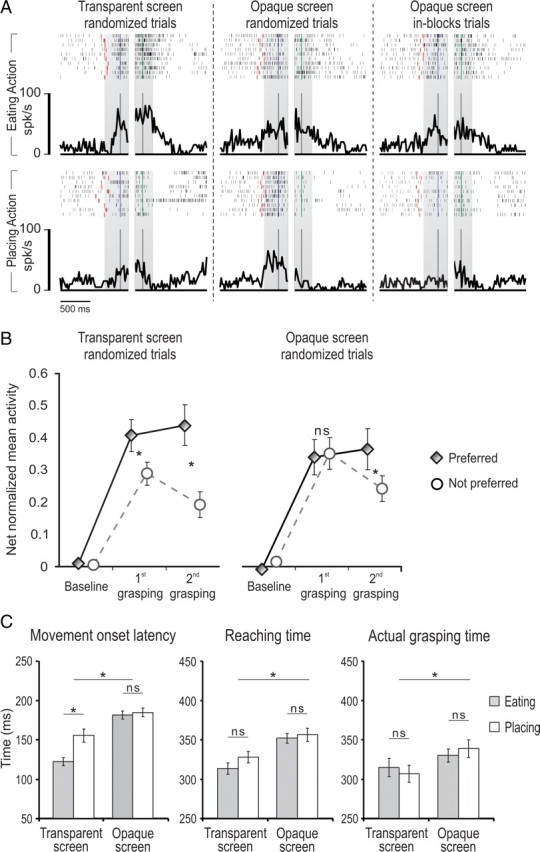Figure 9.

A, Example of an EP neuron tested in the motor task with both transparent and opaque screens. Right, Neuron discharge with an opaque screen with trials run in-blocks, enabling the monkey to predict the final action goal based on the memory of previously executed trials. Note that, in this condition, the early selectivity is still present. Conventions as in Figure 3. B, Comparison between the net-normalized mean activity during the first and the second grasping epochs, recorded from 10 neurons tested in the complex action with both transparent and opaque screens. C, Comparison between movement onset latency (left), reaching time (center), and grasping time (right) of the two monkeys during the execution of eating and placing conditions of the complex action run with transparent and opaque screens. Error bars indicate the SE. ns, Not significant. *p < 0.05.
